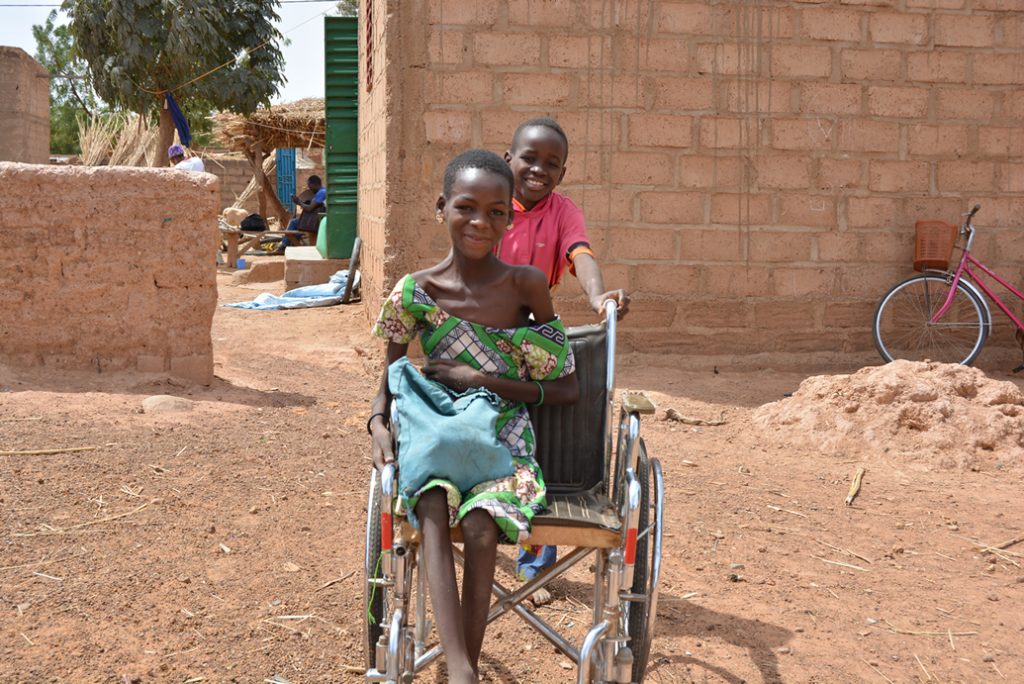DECE3 Unit 5 (Important Question And Answer)-IGNOU-ORSP
SERVICES FOR SPECIAL CHILDREN
https://youtu.be/h0hb9dFnNF8
Check Your Progress Exercise 1
1)What are some of the negative effects of labelling the disabled ?
Labeling disabled individuals can result in stigma, stereotypes, and lowered expectations. This can adversely affect their self-esteem, opportunities, and overall inclusion in society. By focusing solely on their disability, their other strengths and qualities might be overlooked, leading to a loss of identity and potential. It’s important to emphasize abilities and promote a more inclusive environment that values diversity and individual contributions, rather than reducing people to labels.
2)State whether you agree or disagree with the following statements
a) While assessing the magnitude of disability in India, all types of
disability are taken into account.
Disagree. Only four types of disability are considered : visual, hearing, locomotor
and mentally disabled.
b) The Rehabilitation Council of India Act, 1992 has been accepted
by all the people working in the area of disability.
Disagree. Organizations working in the area of disability and the disabled
themselves have many reservations about it.
c) There is a law related to architectural barriers and access facilities
to buildings for the disabled persons.
Disagree. No such law exists.
d)The private sector has helped in a big way as regards employment
for the disabled persons.
Disagree. The contribution of the private sector is minimal.
2) बताएं कि क्या आप सहमत हैं या निम्नलिखित कथनों से असहमत हैं
a) भारत में विकलांगता के परिमाण का आकलन करते हुए, सभी प्रकार के
विकलांगता को ध्यान में रखा जाता है।
सहमत नहीं हैं। केवल चार प्रकार की विकलांगता पर विचार किया जाता है: दृश्य, श्रवण, लोकोमोटर
और मानसिक रूप से विकलांग।
b) भारतीय पुनर्वास परिषद अधिनियम, 1992 को स्वीकार कर लिया गया है
विकलांगता के क्षेत्र में काम करने वाले सभी लोगों द्वारा।
सहमत नहीं हैं। विकलांगता और विकलांगों के क्षेत्र में काम करने वाले संगठन
खुद इसके बारे में कई आरक्षण हैं।
c) वास्तु बाधाओं और पहुंच सुविधाओं से संबंधित एक कानून है
विकलांगों के लिए इमारतों के लिए।
सहमत नहीं हैं। ऐसा कोई कानून मौजूद नहीं है।
d) रोजगार के संबंध में निजी क्षेत्र ने बड़े पैमाने पर मदद की है
विकलांगों के लिए।
सहमत नहीं हैं। निजी क्षेत्र का योगदान न्यूनतम है।
Check Your Progress Exercise 2
Answer the following questions briefly in the space below.
1) What do you understand by the term ‘rehabilitation”?
Rehabilitation is defined as “a set of interventions designed to optimize functioning and reduce disability in individuals with health conditions in interaction with their environment”.
Rehabilitation is the process of helping someone recover, heal, or improve after an injury, illness, or a condition that affects their physical, mental, or emotional well-being. It involves various therapies, exercises, and support to regain lost abilities and enhance overall functioning.
3)What sort of intervention measures can prevent impairments from becoming
disabilities for the person?
a) supplying aids and appliances to the child
b) providing medication or physiotherapy
c) providing education
d) love and support of the family members.
किस तरह के हस्तक्षेप उपायों से दोषों को बनने से रोका जा सकता है
व्यक्ति के लिए विकलांगता?
a) बच्चे को एड्स और उपकरणों की आपूर्ति करना
बी) दवा या फिजियोथेरेपी प्रदान करना
ग) शिक्षा प्रदान करना
d) परिवार के सदस्यों का प्यार और समर्थन।
4)State whether you agree or disagree with the following statements,
a) The various health and nutrition progammes in our country have been successful in preventing occurrence of impairments. Disagree
b) The health care system in our country is geared towards early detection of disabilities. Disagree
4) बताएं कि क्या आप सहमत हैं या निम्नलिखित कथनों से असहमत हैं,
a) हमारे देश में विभिन्न स्वास्थ्य और पोषण की संभावनाएं सफल रही हैं हानि की घटना को रोकने में। असहमत
बी) हमारे देश में स्वास्थ्य देखभाल प्रणाली का जल्द पता लगाने की दिशा में सक्षम है विकलांग। असहमत
Check Your Progress Exercise 3
1. What is special education? What are some of its features ?
Special education means specially designed instruction that meets the unique necds of
the exceptional child. It includes special methods of and materials for teaching and
specially designed classrooms, if needed,
Its features are
a) The instruction is based on each child’s abilities and needs.
b) Teaching the child begins with tasks she can perform and learning takes place
step by step
c) The child is helped to acquire those skills first that will help in day to day life.
d) Reward are an important part of instruction.
e) The child is stimulated so that she becomes more responsive and alert.
विशेष शिक्षा क्या है? इसकी कुछ विशेषताएं क्या हैं?
विशेष शिक्षा का अर्थ है विशेष रूप से डिज़ाइन किया गया निर्देश जो अद्वितीय नक्षत्रों से मिलता है असाधारण बच्चा। इसमें शिक्षण के लिए और सामग्री के विशेष तरीके और शामिल हैं विशेष रूप से डिजाइन किए गए कक्षाओं, यदि आवश्यक हो,
इसकी विशेषताएं हैं
क) निर्देश प्रत्येक बच्चे की क्षमताओं और जरूरतों पर आधारित है।
b) बच्चे को पढ़ाने का काम उन कार्यों से शुरू होता है जो वह कर सकता है और सीखना होता है
क्रमशः
ग) बच्चे को पहले उन कौशलों को हासिल करने में मदद की जाती है जो दिन-प्रतिदिन के जीवन में मदद करेंगे।
डी) इनाम शिक्षा का एक महत्वपूर्ण हिस्सा है।
ई) बच्चे को उत्तेजित किया जाता है ताकि वह अधिक संवेदनशील और सतर्क हो जाए।
2)What is the rationale behind the approach of community based rehabilitation ?

The rationale behind community-based rehabilitation is to help people with disabilities be part of their communities by considering their whole well-being, involving the community, and focusing on their rights and abilities. This approach is practical, cost-effective, and respectful of individual dignity.
3) What principles will guide your selection of an educational setting for a special child ?
a) The child should get the facility for education in keeping with her abilities.
b) The child should have the opportunity to study in as normal a setting as possible.
एक विशेष बच्चे के लिए शैक्षिक सेटिंग के आपके चयन को कौन से सिद्धांत निर्देशित करेंगे?
क) बच्चे को अपनी क्षमताओं को ध्यान में रखते हुए शिक्षा के लिए सुविधा मिलनी चाहिए।
बी) बच्चे को यथासंभव सामान्य रूप से अध्ययन करने का अवसर होना चाहिए।
4)What are some of the factors that come in the way of providing special education
services?
a) Special schools are generally only in major cities. The fees of these schools is 100 times
high
b) Quality of education is unsatisfactory. Many teachers are not trained.
c) Schools do not have a sound orientation as regards special education. Most insist
on giving academic education to the child, whether she needs it or not.
d) It is not economically possible to set up schools in rural areas.
e) The scheme of Integrated Education has not picked up satisfactorily in all states
due to lack of funds. Where it does operate, the concept of integration varies from
school to school
कुछ कारक क्या हैं जो विशेष शिक्षा प्रदान करने के रास्ते में आते हैं सेवाएं?
a) विशेष स्कूल आम तौर पर केवल प्रमुख शहरों में होते हैं। इन स्कूलों की फीस 100 गुना है उच्च
b) शिक्षा की गुणवत्ता असंतोषजनक है। कई शिक्षक प्रशिक्षित नहीं हैं।
ग) स्कूलों में विशेष शिक्षा के संबंध में एक ध्वनि अभिविन्यास नहीं है। सबसे आग्रहपूर्ण
बच्चे को अकादमिक शिक्षा देने पर, उसे उसकी जरूरत है या नहीं।
d) ग्रामीण क्षेत्रों में स्कूल स्थापित करना आर्थिक रूप से संभव नहीं है।
ई) सभी राज्यों में एकीकृत शिक्षा की योजना को संतोषजनक ढंग से नहीं उठाया गया है धन की कमी के कारण। जहां यह काम करता है, एकीकरण की अवधारणा से भिन्न होता है स्कूल से स्कूल
5) State whether you agree or disagree with the following statements
a) All special children can be taught in the same manner and to the same extent.
Disagree. Each child has to be taught in keeping with her abilities.
b) The learning tasks for a special child should be carefully sequenced, so that the
child begins with the tasks she can perform and gradually moves to more
complex ones.
Agree.
C) The coverage and quality of special education services
adequate in the country.
Disagree. The coverage and quality of special education is totally inadequate in
our country
d) Most of the aids and appliances available for the disabled do not meet the needs
of the rural population
Agree.
a) सभी विशेष बच्चों को एक ही तरीके से और एक ही सीमा तक पढ़ाया जा सकता है।
असहमत होना। प्रत्येक बच्चे को उसकी क्षमताओं को ध्यान में रखते हुए पढ़ाया जाना चाहिए।
बी) एक विशेष बच्चे के लिए सीखने के कार्यों को सावधानीपूर्वक अनुक्रमित किया जाना चाहिए, ताकि ए बच्चा उन कार्यों से शुरू होता है जो वह प्रदर्शन कर सकता है और धीरे-धीरे अधिक तक ले जाता हैजटिल। इस बात से सहमत।
ग) विशेष शिक्षा सेवाओं की कवरेज और गुणवत्ता देश में पर्याप्त है।
असहमत होना। विशेष शिक्षा का कवरेज और गुणवत्ता पूरी तरह से अपर्याप्त है अपना देश
d) विकलांगों के लिए उपलब्ध अधिकांश सहायता और उपकरण जरूरतों को पूरा नहीं करते हैं ग्रामीण आबादी का इस बात से सहमत।
LEADERBOARD
[ays_quiz_leaderboard id="602"]
Welcome To
Odisha Regional Study Point
We Allow the best exam preparation for SSC, RAILWAY,BANKING,CT,BED,OTET,OSSTET,ASO,RI,AMIN, DECE(IGNOU) Navodaya(5th,6th) , BSE(Standard 9TH & 10TH) AND CBSE (Standard 9TH & 10TH) In ଓଡ଼ିଆ Language…
Why opt ORSP?
✅Daily Free Live class
✅Daily Free practice Quiz
✅FREE Live Tests Quiz
✅Performance Analysis
✅All Govt Exams are Covered
Join With us As per Schedule
And
Happy Learning…
Thank You
ORSP
(9502052059)
Subcribe Youtube Channel Link-
Join Our Telegram Channel(ORSP DISCUSS)







1 thought on “DECE3 Unit 5 (Important Question And Answer)-IGNOU-ORSP”